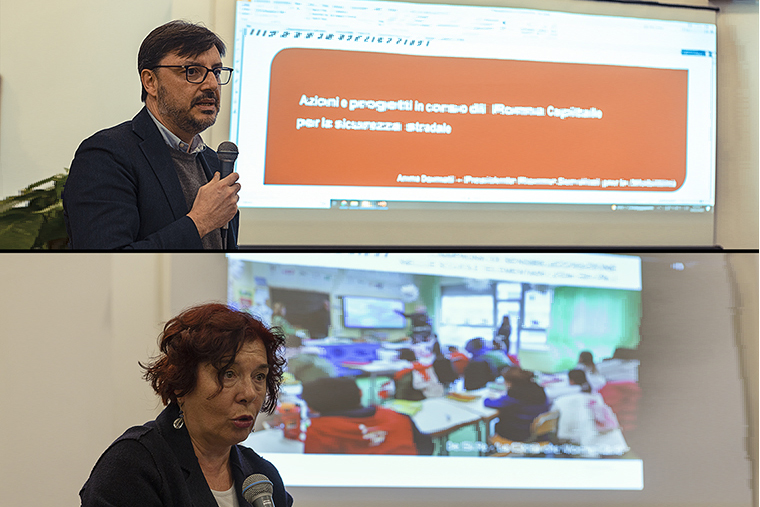The Administration is moving forward with the goals regarding: speed reduction, cars dedicated space and number of cars in the city, safety increasing. This was reiterated yesterday (Wednesday, March 15, ed.) at the Cpitol Hill during the "Rome City 30" conference by the Capitoline councillor for transport, Eugenio Patanè, and the president of Roma Servizi per la Mobilità, Anna Donati.
At the conference, moderated by journalist Luca Valdiserri (father of Francesco, who lost his life hit by a car), the cities of Bologna and Milan, the Salvaciclisti association and the Scarponi foundation also brought their experience and projects.
"Contrary to rumors," Patanè stressed, " Rome has already implemented some “30 zones “and will continue to implement them as part of the safety islands. We have 69 of them in planning. 30 safety islands have already been entrusted and all 69 safety islands will become “30 zones “automatically." The safety islands are designed by Roma Servizi per la Mobilità.
"So far they have been perimeter, however, they have to be designed within them with bicycle lanes, pedestrian zones, sidewalks and, precisely, with the reduction of speed to 30 kilometers per hour."
"Rome has an average of road accidents almost equal to the average of other cities in terms of percentages, but it has a negative data on the excessive mortality of pedestrians and cyclists," Patanè added, "Zone 30 will help reduce that speed differential. We start with the 69 safety islands to arrive at imagining a city that on the secondary road system can be “30 zone”. For primary road system zones, however, this is not imaginable, because on the primary road system there are functions not compatible with zone 30. I'm thinking of buses, express lines, trams, as well as the fact that there are express roads that do not allow for any kind of traffic restriction."
But what will be the new 30 zones in Rome? "The most central one will be the safety island of Ansa Barocca," Anna Donati pointed out, "but others are on the verge of starting: from the one on Viale Ratto delle Sabine in Casal Monastero, to the one in Quadraro, whose intervention has stopped halfway through because of a dispute. And again: the final design in Fonte Meravigliosa is about to close and on Piazza dei Ravennati in Ostia, just to give a few examples."
Anna Donati also recalled the work, which has begun, to make the most dangerous city intersections safe. "Roma Servizi per la Mobilità also does awareness campaigns in elementary schools. Regarding the infrastructure, Donati added, "150 kilometers of bicycle network and the Grab (Great Bicycle Ring Road), which will be a major urban regeneration project, are to be built by 2026”.

